John Chapman was born in Ireland around 1795.
John was a shopkeeper and laceman who worked and resided at a wholesale lace warehouse at 4 Lower Ormond Quay, Dublin.
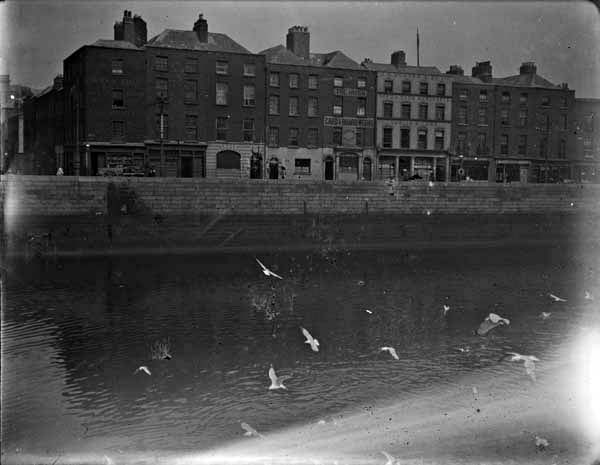
View of the River Liffey and Ormond Quay, Lower, taken from south quays
He can found in various directories and newspaper articles at the following addresses (the later entries may be for his son, also named John Chapman). He seems to disappear (die?) after 1853.
- 1820 7 Lower Ormond Quay, Dublin, Wholesale Lace Warehouse (Wilsons Directory)
- 1821 7 Lower Ormond Quay, Dublin, To be sold by Auction (Saunders Newsletter)
- 1822 4 Lower Ormond Quay, Dublin, British Lace Warehouse (Dublin Weekly Register)
- 1824 4 Lower Ormond Quay, Dublin, Lace Warehouse advertisement (Dublin Morning Register)
- 1829 4 Lower Ormond Quay, Dublin, Merchants and Traders (Treble Almanac)
- 1830 4 Lower Ormond Quay, Dublin, Valuation of Dublin City
- 1835 4 Lower Ormond Quay, Dublin, Lace Warehouse (Pettigrew Dublin Almanac)
- 1836 4 Lower Ormond Quay, Dublin, Lace Warehouse (Dublin Directory)
- 1838 4 Lower Ormond Quay, Dublin, Lace Warehouse (Dublin Directory)
- 1842 4 Lower Ormond Quay, Dublin (Gentleman’s and Citizens Almanack)
- 1843 4 Lower Ormond Quay, Dublin, (Dublin Post Office Directory)
- 1845 4 Lower Ormond Quay, Dublin, (Pettigrew Dublin Almanac)
- 1847 4 Lower Ormond Quay, Dublin (Dublin Almanac)
- 1851 Lower Ormond Quay, St Mary’s parish, Dublin (1851 Dublin Census)
- 1853 St Marys, Dublin, Lower Ormond Quay, occupier (Griffiths Valuation)
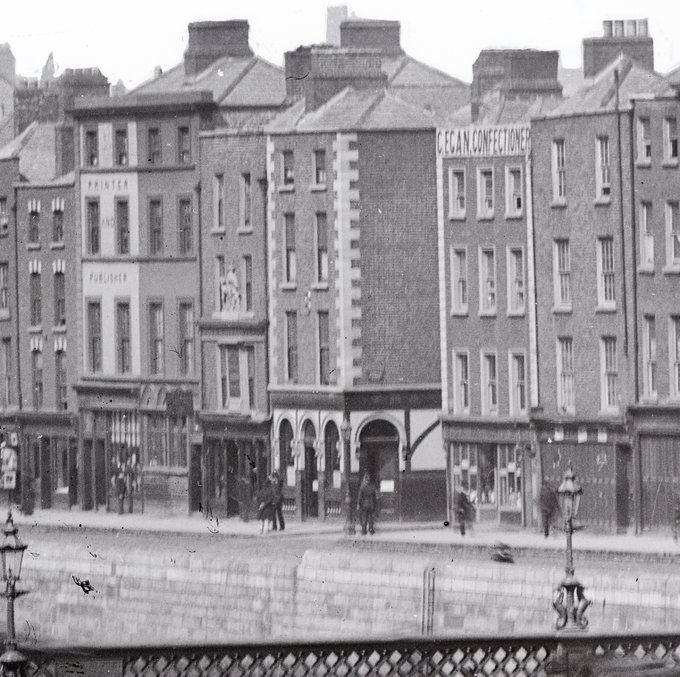
Ormond Quay Dublin
Lower Ormond Quay notices and directory mentions –
- 1804 Joshua Dixon, shoemaker, 4 Lower Ormond Quay (Wilsons Directory)
- 1857 Mr Michael Shortal, solicitor, 4 Lower Ormond Quay (Dublin Daily Express)
- 1863 George Baxter Star, 7 Lower Ormond Quay, house painter (newspaper)
Lower Ormond Quay is in St Marys parish of Dublin (per 1851 census).
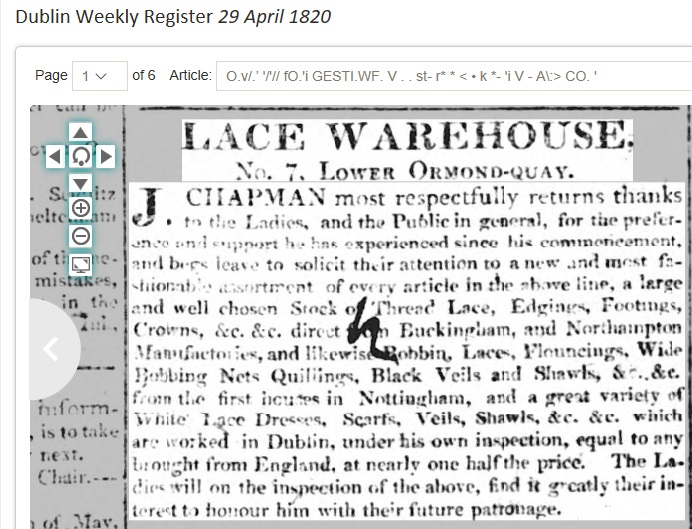
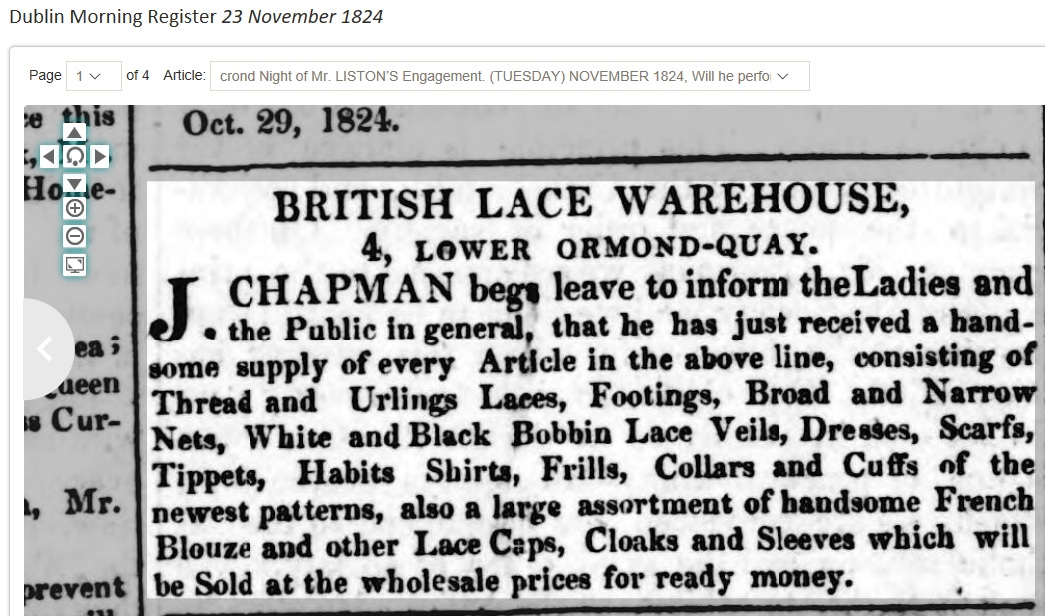
John and Margaret had four children baptised in the Church of Ireland, Dublin. Their marriage has not been found.
- Christian Jane Chapman b 1818 Dublin, bap 5 January 1818, St Mary, C of I,
d 1861 Ararat, Victoria, Australia.
Married Henry Richey 1837 in Dublin. 9 children.
Lived at 15 Belitha Terrace, Islington, London in 1851 census.
Immigrated to Melbourne, Australia in 1853 on the “Hanover” from London. - Daniel b 1820, baptised 4 June 1820, St Marks, C of I, Dublin
- Andrew b 1821, baptised 4 Nov 1821, St Marks, C of I, Dublin
- John b 1824, baptised 11 Aug 1824, St Marks, C of I, Dublin
In 1830 John appears in the Dublin City Valuation register.
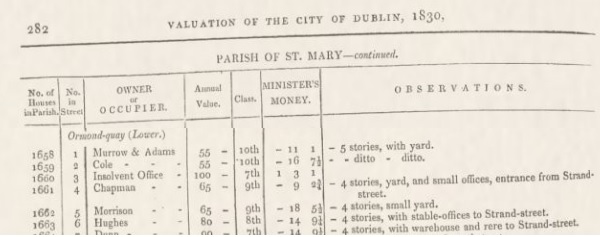
1830 Valuation of the City of Dublin
By 1841 business was not going so well, and John Chapman appears in the Insolvent Debtors list, with petitions to be heard at 3 Lower Ormond Quay, Dublin on 16th October 1841. It states he was formerly a laceman and shopkeeper.
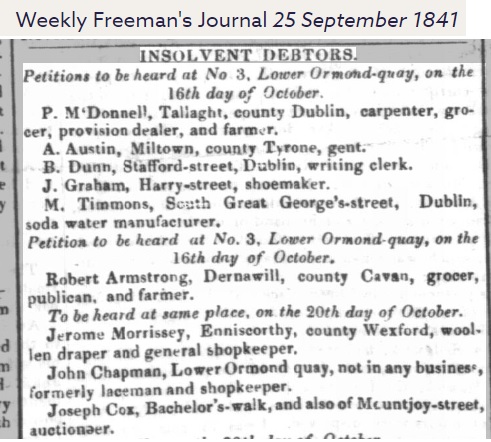
4 Lower Ormond Terrace, Dublin where John Chapman lived and worked for many years is included on the National Inventory of Architectural Heritage, Dublin. It is described –
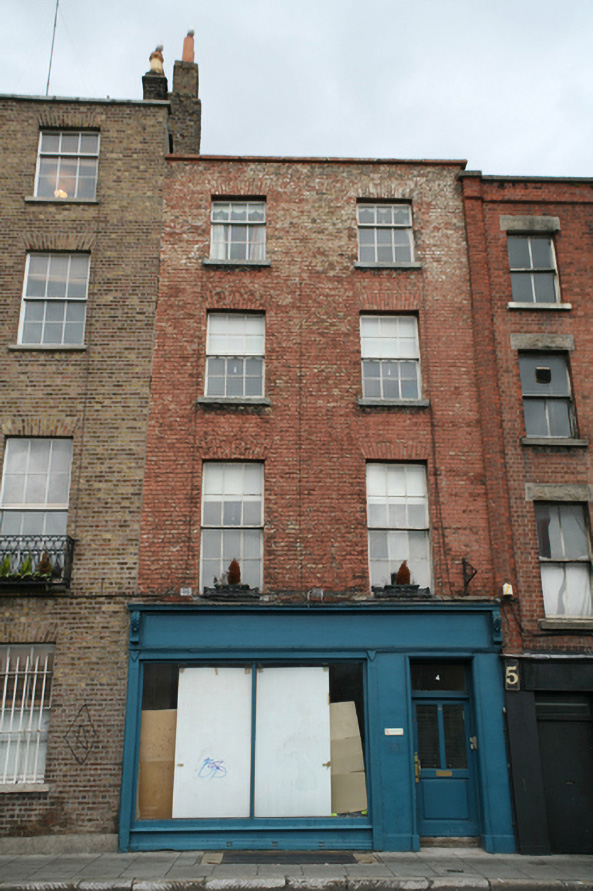
4 Lower Ormond Quay Dublin
Terraced two-bay four-storey house over concealed basement, built c.1800, with shopfront to ground floor. M-profile slate roof, hipped to east, with tall stepped brick chimneystacks with terracotta pots to west party wall abutting stacks of adjoining house. Roof hidden behind parapet wall with masonry coping. Brick walls laid in Flemish bond. Diminishing gauged brick flat-arched window openings with granite sills and original timber sliding sash windows without horns, six-over-six pane to first and second floors and three-over-six pane to third floor. Timber shopfront comprises full-height bipartite fixed-pane display windows flanked by fluted pilasters and square-headed door opening with glazed timber door to east, all surmounted by plain timber fascia framed by foliate scrolled console brackets and cornice over. Steel plate set in granite surround to front pavement. Entrance hall retains original modillion plaster cornice, ceiling rose and some original joinery.
Ormond Quay Lower and Upper were the first quays to be built on the north side of the River Liffey c.1680. They were developed by Humphrey Jervis, and named them in honour of the Duke of Ormond, who instigated the trend of building houses to face the river. This house is a good example of its type with a late nineteenth-century shopfront, sitting comfortably in a terrace of similarly-scaled buildings and making a positive contribution to the appearance of one of Dublin’s most intact river frontages.
It is unknown where and when John and Margaret Chapman died and were buried.
There are several Chapman’s that appear in the 1804 Wilsons Directory of Dublin that may be the father of John Chapman born ca 1795.


